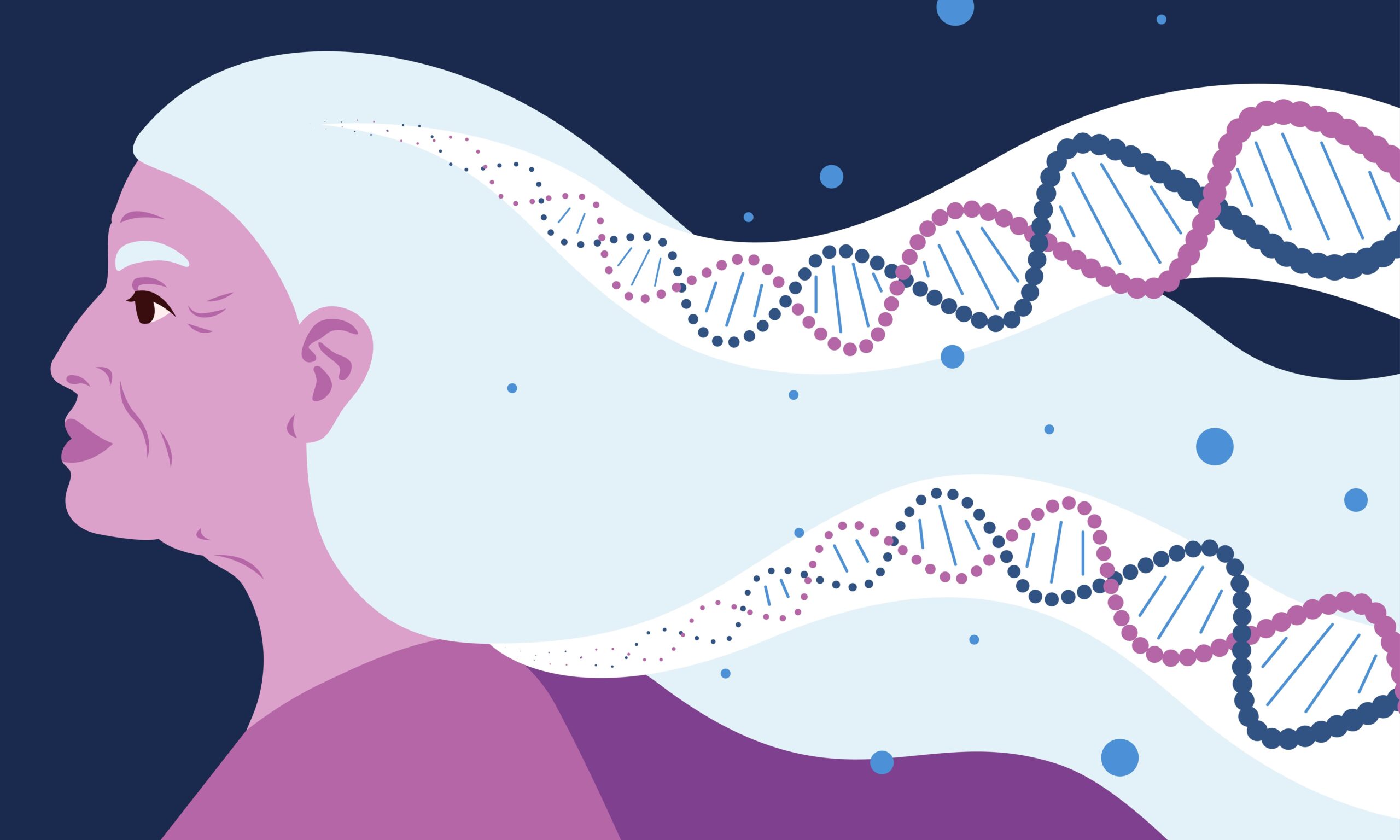About us
Learn how GA4GH helps expand responsible genomic data use to benefit human health.
Learn how GA4GH helps expand responsible genomic data use to benefit human health.
Our Strategic Road Map defines strategies, standards, and policy frameworks to support responsible global use of genomic and related health data.
Discover how a meeting of 50 leaders in genomics and medicine led to an alliance uniting more than 5,000 individuals and organisations to benefit human health.
GA4GH Inc. is a not-for-profit organisation that supports the global GA4GH community.
The GA4GH Council, consisting of the Executive Committee, Strategic Leadership Committee, and Product Steering Committee, guides our collaborative, globe-spanning alliance.
The Funders Forum brings together organisations that offer both financial support and strategic guidance.
The EDI Advisory Group responds to issues raised in the GA4GH community, finding equitable, inclusive ways to build products that benefit diverse groups.
Distributed across a number of Host Institutions, our staff team supports the mission and operations of GA4GH.
Curious who we are? Meet the people and organisations across six continents who make up GA4GH.
More than 500 organisations connected to genomics — in healthcare, research, patient advocacy, industry, and beyond — have signed onto the mission and vision of GA4GH as Organisational Members.
These core Organisational Members are genomic data initiatives that have committed resources to guide GA4GH work and pilot our products.
This subset of Organisational Members whose networks or infrastructure align with GA4GH priorities has made a long-term commitment to engaging with our community.
Local and national organisations assign experts to spend at least 30% of their time building GA4GH products.
Anyone working in genomics and related fields is invited to participate in our inclusive community by creating and using new products.
Wondering what GA4GH does? Learn how we find and overcome challenges to expanding responsible genomic data use for the benefit of human health.
Study Groups define needs. Participants survey the landscape of the genomics and health community and determine whether GA4GH can help.
Work Streams create products. Community members join together to develop technical standards, policy frameworks, and policy tools that overcome hurdles to international genomic data use.
GIF solves problems. Organisations in the forum pilot GA4GH products in real-world situations. Along the way, they troubleshoot products, suggest updates, and flag additional needs.
GIF Projects are community-led initiatives that put GA4GH products into practice in real-world scenarios.
The GIF AMA programme produces events and resources to address implementation questions and challenges.
NIF finds challenges and opportunities in genomics at a global scale. National programmes meet to share best practices, avoid incompatabilities, and help translate genomics into benefits for human health.
Communities of Interest find challenges and opportunities in areas such as rare disease, cancer, and infectious disease. Participants pinpoint real-world problems that would benefit from broad data use.
The Technical Alignment Subcommittee (TASC) supports harmonisation, interoperability, and technical alignment across GA4GH products.
Find out what’s happening with up to the minute meeting schedules for the GA4GH community.
See all our products — always free and open-source. Do you work on cloud genomics, data discovery, user access, data security or regulatory policy and ethics? Need to represent genomic, phenotypic, or clinical data? We’ve got a solution for you.
All GA4GH standards, frameworks, and tools follow the Product Development and Approval Process before being officially adopted.
Learn how other organisations have implemented GA4GH products to solve real-world problems.
Help us transform the future of genomic data use! See how GA4GH can benefit you — whether you’re using our products, writing our standards, subscribing to a newsletter, or more.
Join our community! Explore opportunities to participate in or lead GA4GH activities.
Help create new global standards and frameworks for responsible genomic data use.
Align your organisation with the GA4GH mission and vision.
Want to advance both your career and responsible genomic data sharing at the same time? See our open leadership opportunities.
Join our international team and help us advance genomic data use for the benefit of human health.
Discover current opportunities to engage with GA4GH. Share feedback on our products, apply for volunteer leadership roles, and contribute your expertise to shape the future of genomic data sharing.
Solve real problems by aligning your organisation with the world’s genomics standards. We offer software dvelopers both customisable and out-of-the-box solutions to help you get started.
Learn more about upcoming GA4GH events. See reports and recordings from our past events.
Speak directly to the global genomics and health community while supporting GA4GH strategy.
Be the first to hear about the latest GA4GH products, upcoming meetings, new initiatives, and more.
Questions? We would love to hear from you.
Read news, stories, and insights from the forefront of genomic and clinical data use.
Publishes regular briefs exploring laws and regulations, including data protection laws, that impact genomic and related health data sharing
Translates findings from studies on public attitudes towards genomic data sharing into short blog posts, with a particular focus on policy implications
Attend an upcoming GA4GH event, or view meeting reports from past events.
See new projects, updates, and calls for support from the Work Streams.
Read academic papers coauthored by GA4GH contributors.
Listen to our podcast OmicsXchange, featuring discussions from leaders in the world of genomics, health, and data sharing.
Check out our videos, then subscribe to our YouTube channel for more content.
View the latest GA4GH updates, Genomics and Health News, Implementation Notes, GDPR Briefs, and more.
18 Sep 2025
Federated health data sharing is no easy feat, but innovation and collaboration are guiding the path forward.
Lindsay Smith of the International Precision Child Health Partnership (IPCHiP) transparently shares the challenges IPCHiP has faced in piloting federated health data sharing. She calls on the global genomics community to share experiences and lessons learned, so we can find collective solutions that advance precision healthcare.

By Lindsay Smith, International Precision Child Health Partnership (IPCHiP)
This is not a success story. It is not a story of failure, either. It is a call for the global genomics community to share experiences openly.
In the world of international data sharing, there is a daunting chasm between promising innovations and their real-world application — a space where data sharing initiatives often falter, not for lack of vision, but due to the complex web of challenges that arise in implementation.
These challenges extend beyond technical infrastructure limitations, like sufficient storage capabilities and heterogeneous data formats, to include legal, ethical, and cultural barriers that can slow or even halt progress. Strict national regulatory frameworks control the movement of patient data and restrict its transfer across borders. These restrictions are major obstacles that researchers and healthcare professionals must navigate when seeking access to international datasets. Furthermore, the datasets available have limited genetic variability within the populations represented in their makeup, which constrains the clinical relevance of genetic discoveries, as insufficient sample sizes reduce the statistical power needed to detect disease-associated variants within specific populations.
Yet, these challenges are not insurmountable. With collaboration, adaptability, and a shared commitment to overcoming these hurdles, the potential to bridge this divide remains firmly within reach.
The International Precision Child Health Partnership (IPCHiP) is a multinational collaborative bringing together four leading paediatric institutes: Boston Children’s Hospital (United States); University College London Great Ormond Street Institute for Child Health and Great Ormond Street Hospital (United Kingdom); the Murdoch Children’s Research Institute with The Royal Children’s Hospital and the University of Melbourne Department of Paediatrics (Melbourne Children’s Campus) (Australia); and The Hospital for Sick Children (SickKids) (Canada).
IPCHiP aims to improve access to genomic diagnoses and novel treatments in order to optimise outcomes for children with rare diseases. The partnership facilitates collaborative scientific investigation of rare diseases, creates innovative diagnostic and therapeutic solutions, and develops methods for acquiring, sharing, and analysing genomic and phenotypic data across institutions. As a new Driver Project for the Global Alliance for Genomics and Health (GA4GH), IPCHiP is able to share experiences with a network of institutions with similar goals, while bringing a clinical perspective to standards development to shape and adopt global best practices for precision child health.
At the core of IPCHiP is the design, institutional support, and launch of multi-site cohort studies. Our flagship study, Gene-STEPS (Shortening Time of Evaluation in Paediatric Epilepsy Services), is demonstrating the feasibility of implementing rapid clinical genome sequencing on a disease-specific cohort in inpatient and outpatient settings to improve diagnostic yield. While each IPCHiP institute has generated robust and comprehensive datasets through Gene-STEPS, this data remains siloed, and there is no easy mechanism for investigators to explore that data. Links between diagnoses are only made if one investigator directly asks another, and it is unclear what connections, including both positive and negative results, are missed through this “phone a friend” approach. We need a better and more efficient way to pool and explore the data generated from each institution.
As we considered how to approach data sharing, federation — a data-sharing model in which requesting parties bring their analysis software to the data — seemed like a logical solution to navigate differing institutional cultures, jurisdictional policy, and regulation, while accommodating the sensitive nature of health data. Despite feeling prepared to navigate setting up a federated system, we soon encountered many unexpected challenges. In keeping with our aim to share experiences openly, I want to highlight a sampling of issues we faced during this project.
On-premise vs cloud considerations
Institutions had different requirements for hosting data sharing software in a cloud vs an on-premise (on-prem) environment. It is possible to accommodate these differing requirements, but it would have been helpful to have the ability to easily compare notes. On-prem environments require greater isolation features than cloud, and while a cloud approach may be able to mitigate isolation concerns, it can be expensive to maintain even with a minimal set up.
Data security concerns
In order to run workflows in another institution’s environment, we need open ports to the internet and significant infrastructure updates to support isolation or security management features. Open ports are not always feasible in an institution hosting health data, and these updates can be cost prohibitive.
If the cloud supporting data sharing software is set up in an environment isolated from the main data store, data needs to move to be accessible. Is this really a federative approach, if we have to move the data?
Querying connected datasets
User friendly interfaces and no-code solutions are needed to enable use by clinicians and researchers who are not trained in query methods. No-code solutions have limitations, and if a researcher wishes to query beyond simple filters, technical knowledge is required.
Data access
Once the datasets of interest are located, administration of data access requests was an unanticipated complication for some sites. For sites without a central data access committee or system, it was unclear how to triage requests appropriately.
Workflow languages
Preferences for particular workflow languages vary across bioinformaticians and sites.
Workflow cost management and computing resources
If a researcher triggers a workflow in another site’s environment, it is unclear who pays for the workflow costs and how. To support cost management, there also needs to be agreement on what the workflow is intended to do at each site.
Results management
The ability to combine datasets and queries from across our sites is key to letting go of our “phone a friend” process. With four sites, and the potential for multiple variables of interest, it is unclear if data is stored or harmonised in a way that allows for complex queries.
The challenges listed here are just a snapshot of what we have faced during our pilot project. The independent nature of each participating institution and the diversity of our existing systems really underscore the complexity of aligning infrastructure, policies, and expectations. Success may take a different path at each site. Solutions will come as the result of trust, transparent communication, and a willingness to adapt.
My hope is that by sharing experiences openly (both the good and the bad), engaging in collaborative pilot projects, and growing from the lessons learned so far, we are gradually building bridges over the chasm between innovation to application, one brick or beam at a time. I would call on other global data sharing collaborations to continue engaging in a collective dialogue about lessons learned, challenges faced, and opportunities to drive progress together. The potential rewards — better variant interpretation, improved analytical and diagnostic power, and the realisation of precision health — are well worth the journey.

